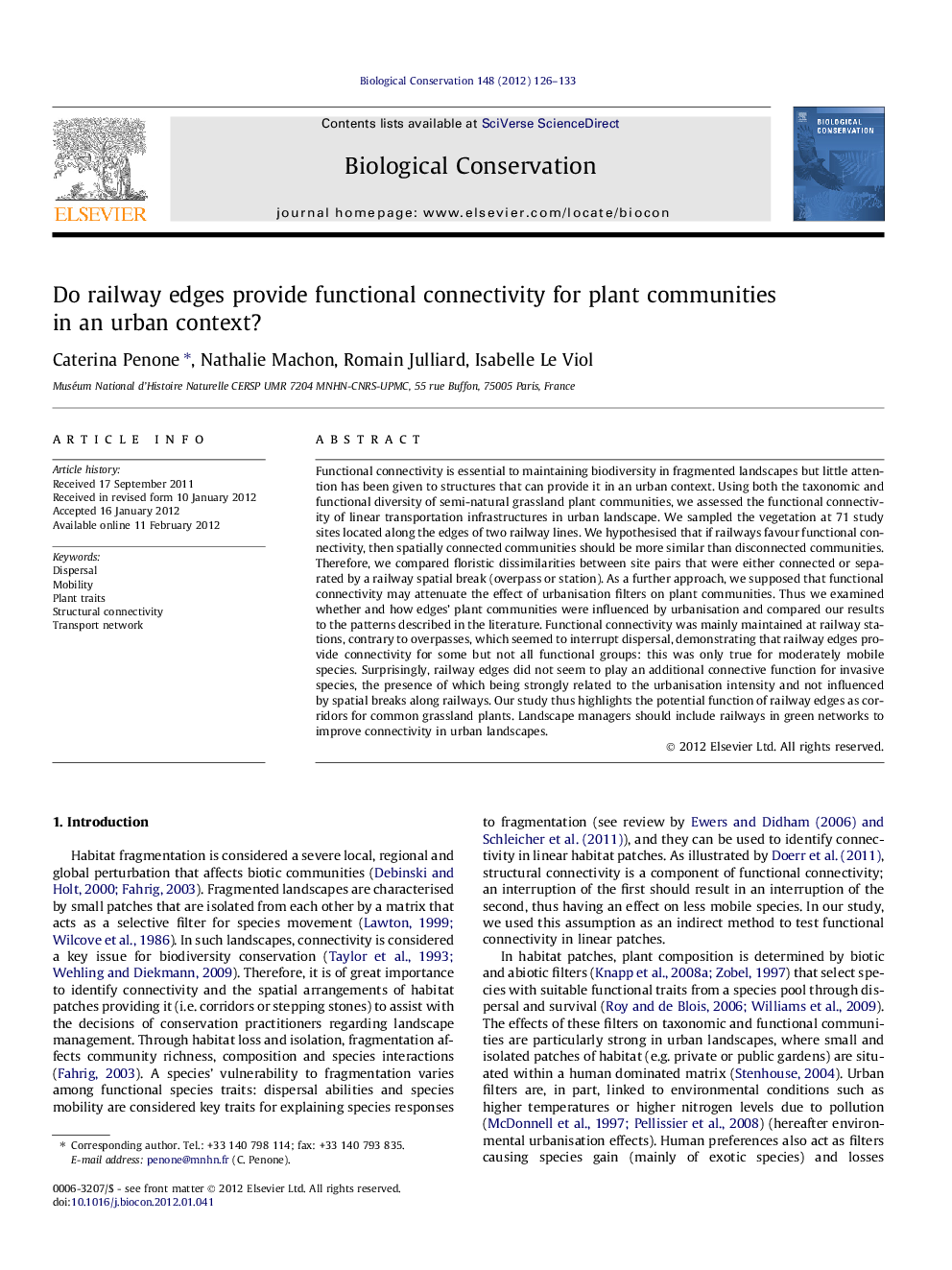| Article ID | Journal | Published Year | Pages | File Type |
|---|---|---|---|---|
| 4385501 | Biological Conservation | 2012 | 8 Pages |
Functional connectivity is essential to maintaining biodiversity in fragmented landscapes but little attention has been given to structures that can provide it in an urban context. Using both the taxonomic and functional diversity of semi-natural grassland plant communities, we assessed the functional connectivity of linear transportation infrastructures in urban landscape. We sampled the vegetation at 71 study sites located along the edges of two railway lines. We hypothesised that if railways favour functional connectivity, then spatially connected communities should be more similar than disconnected communities. Therefore, we compared floristic dissimilarities between site pairs that were either connected or separated by a railway spatial break (overpass or station). As a further approach, we supposed that functional connectivity may attenuate the effect of urbanisation filters on plant communities. Thus we examined whether and how edges’ plant communities were influenced by urbanisation and compared our results to the patterns described in the literature. Functional connectivity was mainly maintained at railway stations, contrary to overpasses, which seemed to interrupt dispersal, demonstrating that railway edges provide connectivity for some but not all functional groups: this was only true for moderately mobile species. Surprisingly, railway edges did not seem to play an additional connective function for invasive species, the presence of which being strongly related to the urbanisation intensity and not influenced by spatial breaks along railways. Our study thus highlights the potential function of railway edges as corridors for common grassland plants. Landscape managers should include railways in green networks to improve connectivity in urban landscapes.
